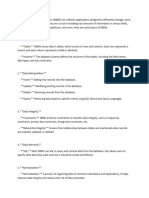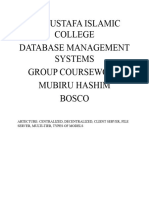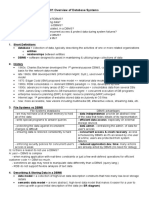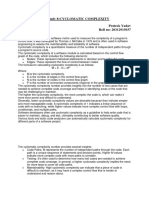0% found this document useful (0 votes)
13 views10 pagesDbms Notes and Concepts
The document provides a comprehensive overview of Database Management Systems (DBMS), detailing its components, types, advantages, and common operations. It also covers database system architecture, data models, schemas, instances, and the roles of database administrators and designers. Additionally, it discusses the Entity-Relationship model and its key concepts, including design processes and extended features.
Uploaded by
tejas upadhyayCopyright
© © All Rights Reserved
We take content rights seriously. If you suspect this is your content, claim it here.
Available Formats
Download as TXT, PDF, TXT or read online on Scribd
0% found this document useful (0 votes)
13 views10 pagesDbms Notes and Concepts
The document provides a comprehensive overview of Database Management Systems (DBMS), detailing its components, types, advantages, and common operations. It also covers database system architecture, data models, schemas, instances, and the roles of database administrators and designers. Additionally, it discusses the Entity-Relationship model and its key concepts, including design processes and extended features.
Uploaded by
tejas upadhyayCopyright
© © All Rights Reserved
We take content rights seriously. If you suspect this is your content, claim it here.
Available Formats
Download as TXT, PDF, TXT or read online on Scribd
/ 10























































































